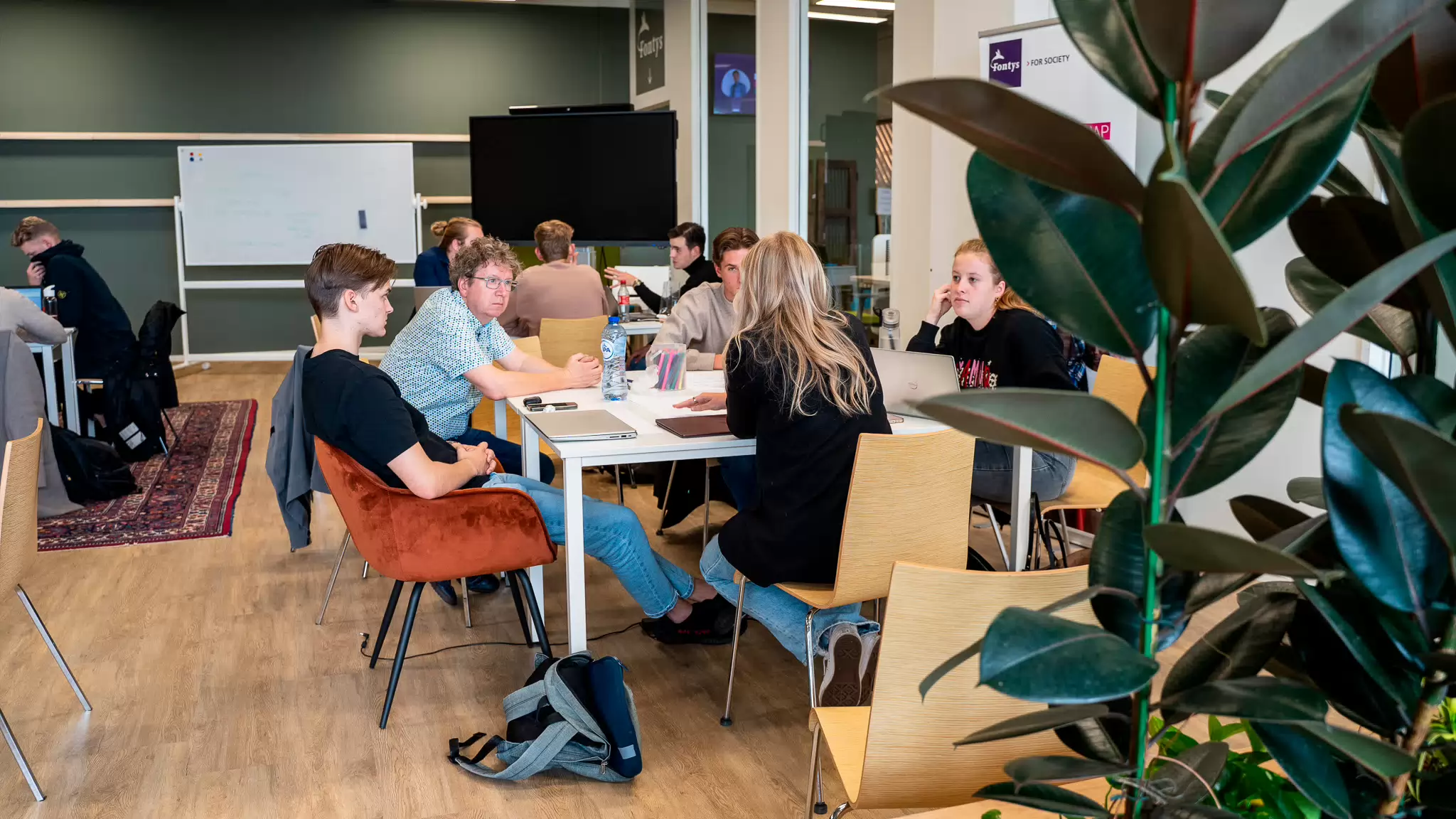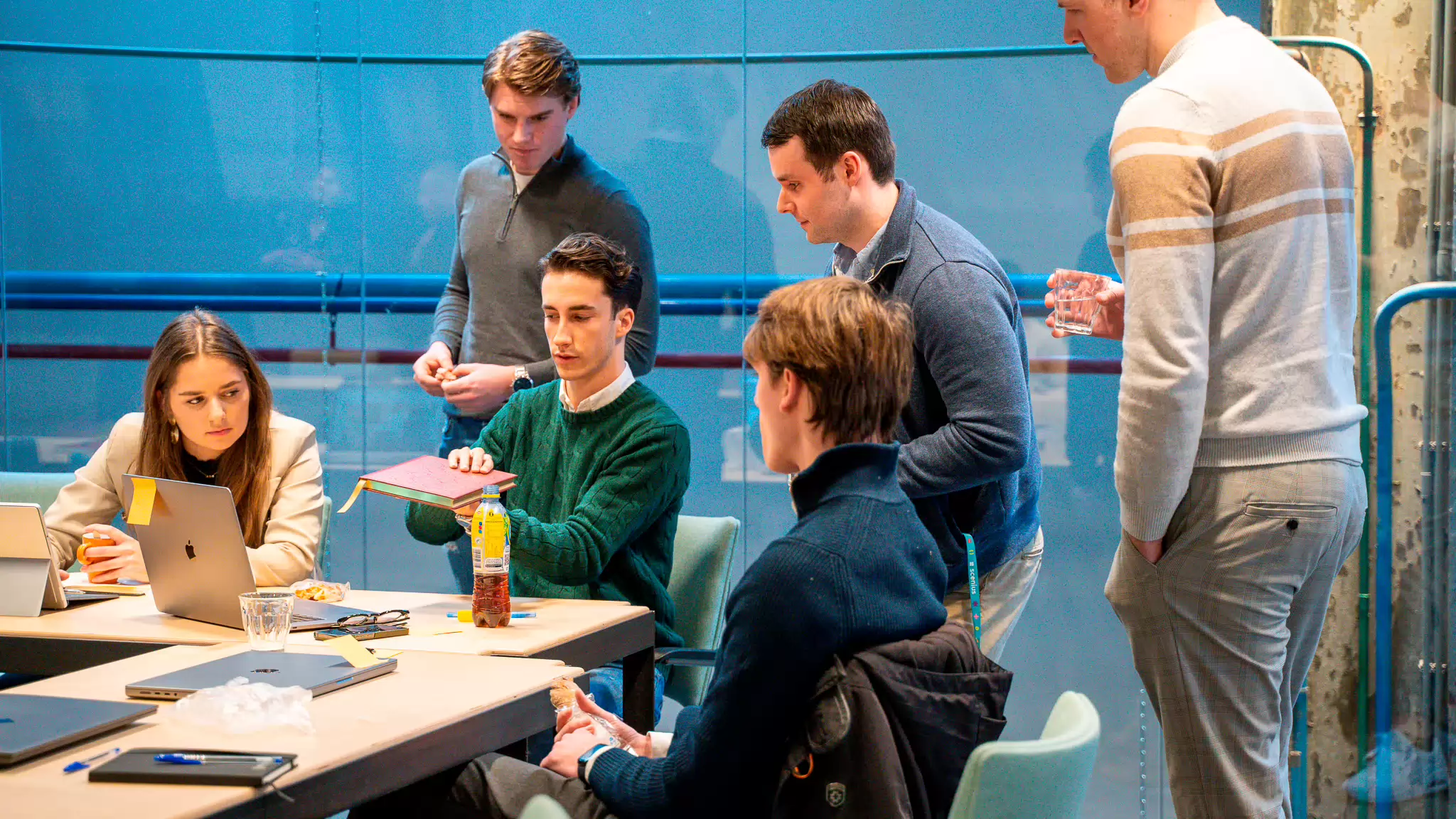The Role of Context in Entrepreneurial Success in Education
In an entrepreneurship track such as the Minor in Entrepreneurship at the Fontys Centre for Entrepreneurship, students work in teams to come up with a business idea and build a startup around that idea. Although the intention of such a track is to simulate the reality of entrepreneurship as closely as possible, there still remains a fundamental difference compared to how entrepreneurs operate in the real world.
Entrepreneurs do not start from a blank page: they have an idea based on a clearly identified market need or have developed a technology and want to explore whether there are commercial applications for it. Sometimes, entrepreneurs start from a large network within a certain industry and want to tackle a problem that affects the entire industry together with a team from that network.

The situation of students in such an entrepreneurship track is quite different. Students must form their teams with fellow students and generally have about 20 weeks to come up with and develop something. Moreover, they often operate within a limited context: the world of the student and, to some extent, the world of the consumer.
As a result, when you challenge student teams to come up with a fun business idea, they often propose ideas that are more "nice-to-have" than "need-to-have." Think of fashionable T-shirts, ready-made meal delivery services, or apps for student housing. These ideas are certainly interesting, but from a business perspective, they may not always be the most promising.
Alternative Approach Leads to More Relevant Business Ideas
In recent years, several departments within Fontys have been working on an alternative approach. The goal of this approach is to provide students with more “context,” enabling them to develop business ideas that are better aligned with the problems and needs of a specific target group—resulting in more “need-to-have” ideas.
At the start of the entrepreneurship track, student teams are not asked to immediately come up with a business idea. Instead, they are first asked to choose a target group that everyone in the team finds interesting, and then to learn everything there is to know about that group. This means engaging in direct conversations with people from the target audience, conducting research through industry associations and experts, and reading relevant reports and articles if available. Based on all these insights, the student team then develops a relevant business idea.

The initial findings from this experiment have encouraged the involved coaches and lecturers to continue using this approach. After all, students:
- were, through this approach, immediately prompted to engage with a relevant target group (something that, in the original approach, sometimes took weeks to happen),
- learned early in the process how to actually approach a target group (which had the added benefit that they had already spoken with the target group before having to pitch their product or service to them later in the track),
- came up with business ideas that were perceived as more valuable and relevant.
Additional Evidence
Over the past academic year, the Fontys Centre for Entrepreneurship tested both the idea-centered and the alternative context-centered approach within its education programs. The group of students who started the Minor in Entrepreneurship in September followed the original “idea-centered” approach, while the group that began in February 2023 followed the “context-centered” approach.
A comparison between the two approaches led to the following findings:
| Idea-Centered Approach (September) | Context-Centered Approach (February) |
| Students started by generating an idea without a specific context. | Students began with in-depth research to understand the needs and desires of a specific target group, creating context first. |
| Creativity, feasibility, and viability of the ideas were comparable across groups. | The result? Ideas that were not only creative and feasible, but above all desirable for the target audience. |
These findings highlight the importance of aligning with the needs and desires of a specific target group. It may seem like a no-brainer, but it clearly shows that the context-centered approach better prepares students for their first steps into entrepreneurship. It confirms what many coaches and lecturers already sensed: context is crucial for successful entrepreneurship.
We are therefore continuing on this path—the context-centered approach fits seamlessly with the practice-oriented nature of the minor. Our next step is to explore additional ways to broaden the context for student entrepreneurs. We are also looking to collaborate with Fontys colleagues who would be interested in replicating this research to see whether similar results can be confirmed in other educational settings.
For more information about the research or to express interest in collaborating, please contact Gert Poppe. This study on the importance of context in entrepreneurship education is part of the broader research theme Business Leadership & Entrepreneurship, under the Research Group for Industrial Engineering & Entrepreneurship.
Would you like to learn more about this research or the Fontys Centre for Entrepreneurship?
Contact usWe’re here to help!
Do you have a question or want to learn more about one of our areas of expertise? Feel free to reach out or visit us at our Entrepreneurship Hub – we’d love to meet you!
